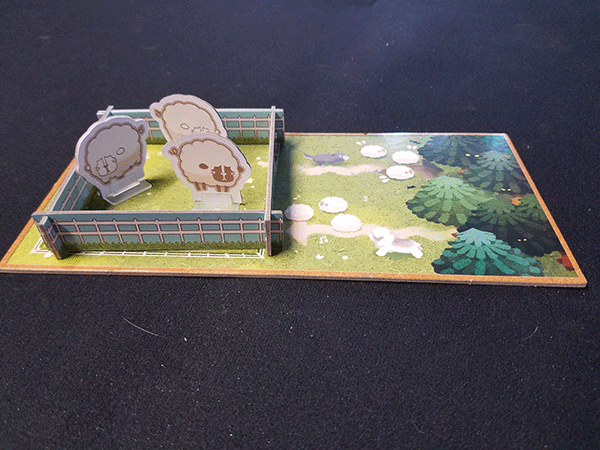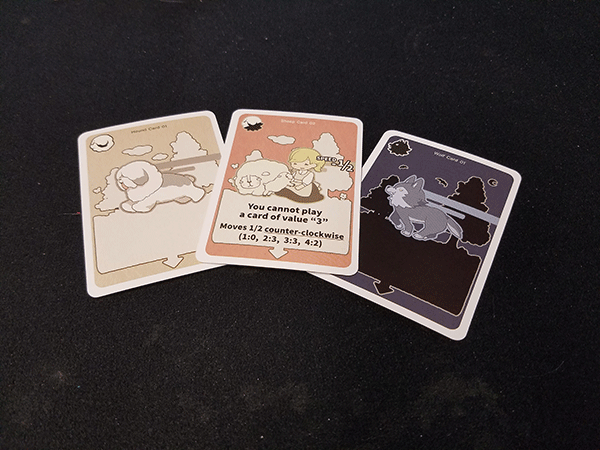Wolf & Hound Review
on Sep 8, 2016
I have a soft spot for partnership games. Almost by their nature, they work great with your closest friends and family. Parents coming over to visit? Partnership game. Meeting up with your sibling and their spouse? Pair up. And it seems everyone has that other married couple that they like to hang out with. Wolf & Hound is a great example of a partnership game that is a good, if not great, example of this particular niche. It’s the kind of game that is easy to teach and enjoyable for casual and non-gamer friends.
Partners sit across from one another and each player starts with three sheep in their pen. One player also starts with a wolf and a hound in front of them. On a player’s turn, if they have a wolf in front of them, they lose one of their sheep. If the hound is in front of them, the hound brings back a lost sheep.

On their turn, the player gets to play one card. They draw a hand of cards from the draw deck which is equally divided between wolf and hound cards. Each card simply has one large number on it. Then they play one card from their hand. If a wolf card is played, the wolf is moved that many spaces clockwise. The same for the hound. Ideally, you want the hound to remain on your team and the wolf to end up on the other team. Especially if you can get it on the person to your left. If you do, they’ll start their turn with the Wolf on them and lose a sheep right off the bat!
The game is played until one player loses all of their sheep or the deck runs out of cards. If a player has all of their sheep chased off, their team loses. Otherwise, you count up total sheep and whichever team has more sheep wins.
One of the great things about Wolf & Hound is how it reinforces the partnership. For example, if your partner has the wolf on him or her, then you absolutely need to move that wolf. If you don’t, your opponent surely won’t and your partner will lose a sheep. So you’ll need to keep a keen eye on your partner’s welfare in addition to your own.
Although the premise is simple, the game comes with a full compliment of variations to really kick up the considerations. For example, there are multiple wolf and hound cards that may have slightly different effects. Or you could even play with multiple wolves. There are even Sheep cards. If you start with a Sheep in front of you, you get a special ability. And they move no matter what kind of card is played. Sometimes, you’ll be forced to give the other team a Sheep’s bonus in order to also get the Wolf on them – or away from your partner.
The low barrier to entry and the cutesy art really make this a go-to title when playing with new gamers or very casual folks. Plus, I find that most people are more comfortable trying something new if they have a partner or a team. They don’t feel like they are all alone in an unfamiliar setting. A play of this title takes only five minutes or so, and it’s enjoyable enough that you usually want to play again right away. If you have another couple that you hang out with, or if you know some casual gamers, this can be a worthwhile title.

But, it’s worth noting that while it is wonderful for what seems to be its target audience, it would not work well with other groups. The game is just a bit too light and simple for most hobby gamers. And, even if you do have a group of non-gamers, you need exactly four players for this partnership game to work. Someone brought a friend to game night? Time to play something else. Someone’s boyfriend got sick? Grab something that works with three.
The result is that Wolf & Hound has a very specific and somewhat fragile niche: casual or non-gamers when you have exactly four players. It’s easy for that to be disrupted, which means it’s easy for this game to stay on your shelf. But if you do have the right setup with any real frequency, you should definitely check this game out. In its intended environment, it’s stellar.

 Customer Support
Customer Support  Subscribe
Subscribe 




 Account
Account  Wishlist
Wishlist 
